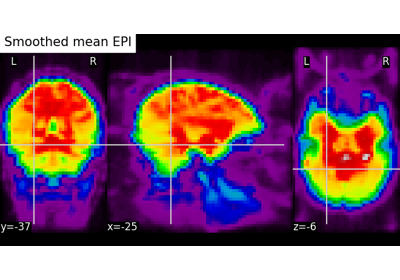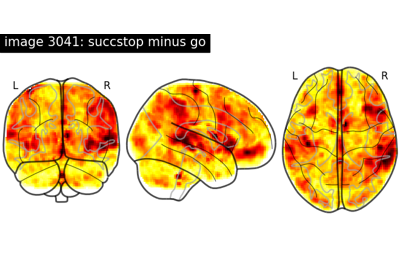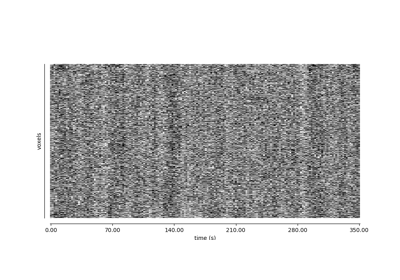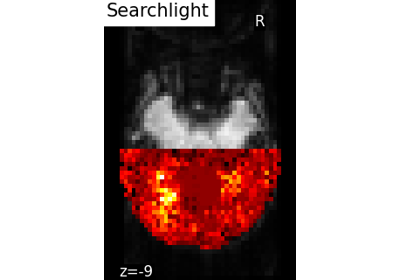Note
This page is a reference documentation. It only explains the function signature, and not how to use it. Please refer to the user guide for the big picture.
nilearn.image.new_img_like#
- nilearn.image.new_img_like(ref_niimg, data, affine=None, copy_header=False)[source]#
Create a new image of the same class as the reference image.
- Parameters:
- ref_niimgNiimg-like object
Reference image. The new image will be of the same type.
- data
numpy.ndarray Data to be stored in the image. If data dtype is a boolean, then data is cast to ‘uint8’ by default.
- .. versionchanged:: 0.9.2
Changed default dtype casting of booleans from ‘int8’ to ‘uint8’.
- affine4x4
numpy.ndarray, optional Transformation matrix.
- copy_header
bool, optional Indicated if the header of the reference image should be used to create the new image. Default=False.
- Returns:
- Niimg-like object
A loaded image with the same file type (and, optionally, header) as the reference image.
Examples using nilearn.image.new_img_like#

Computing a Region of Interest (ROI) mask manually

NeuroVault meta-analysis of stop-go paradigm studies

